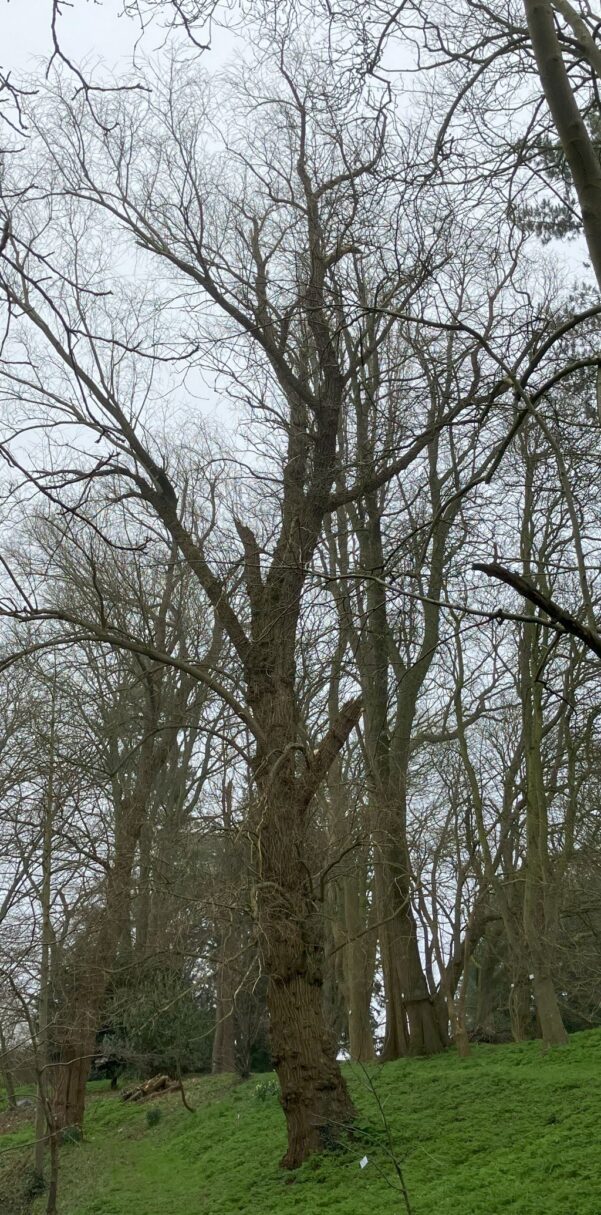#81 WHITE WILLOW
Salix alba

Planted: 1924
On the south side of the Moat Path.
| Distribution: | Native to Europe, western and central Asia. The name derives from the white undersides of the leaves. |
| Planting Date: | 1924 |
| Growth Habit: | A medium to large deciduous tree with an irregular, often-leaning crown. |
| Bark: | Grey-brown and is deeply fissured in older trees. The shoots are grey-brown to green-brown. |
| Leaf: | Paler than most other willows because they are covered with very fine, silky white hairs, in particular on the underside; they are 5 to 10 cm long and 0.5 to 1.5 cm wide. |
| Flowers: | The flowers are produced in catkins in early spring and are pollinated by insects – dioecious, with male and female catkins on separate trees. The male catkins are 4 to 5 cm long. The female catkins 3 to 4 cm long, at pollination, lengthening as the fruit matures. |
| Fruit: | When mature in midsummer, the female catkins comprise numerous small (4 mm) capsules. Each containing numerous minute seeds embedded in silky white hairs – which aids wind dispersal. |
| Toxicity: | Willow bark has similar properties to aspirin and has been used historically for pain relief. The research on its effectiveness is contradictory. |
| Potential tree size | 10 to 30 m tall, with a girth of 2.2 m. |
| Uses: | Wood tough, strong, and light in weight, but minimal resistance to decay. Young stems are used for basket-making. Wood used to make cricket bats. |
| Plant Hunter: | Native |
| Introduction Date: | Native |
| Anecdotes and Comments: | Charcoal, made from the wood, was important for gunpowder manufacture. Bark used in the past for tanning leather. |